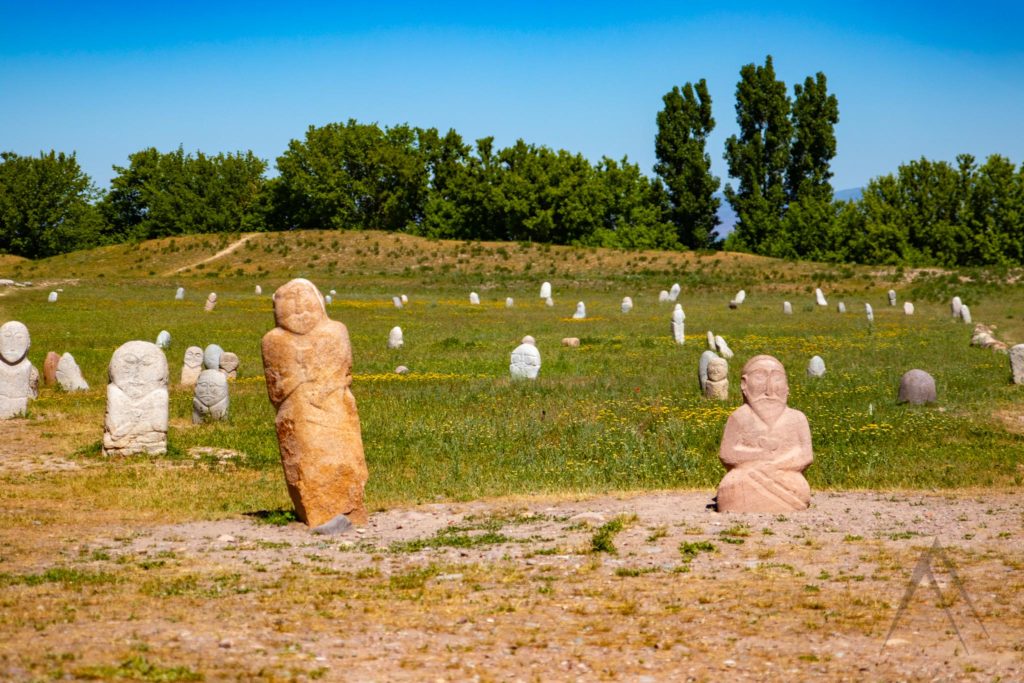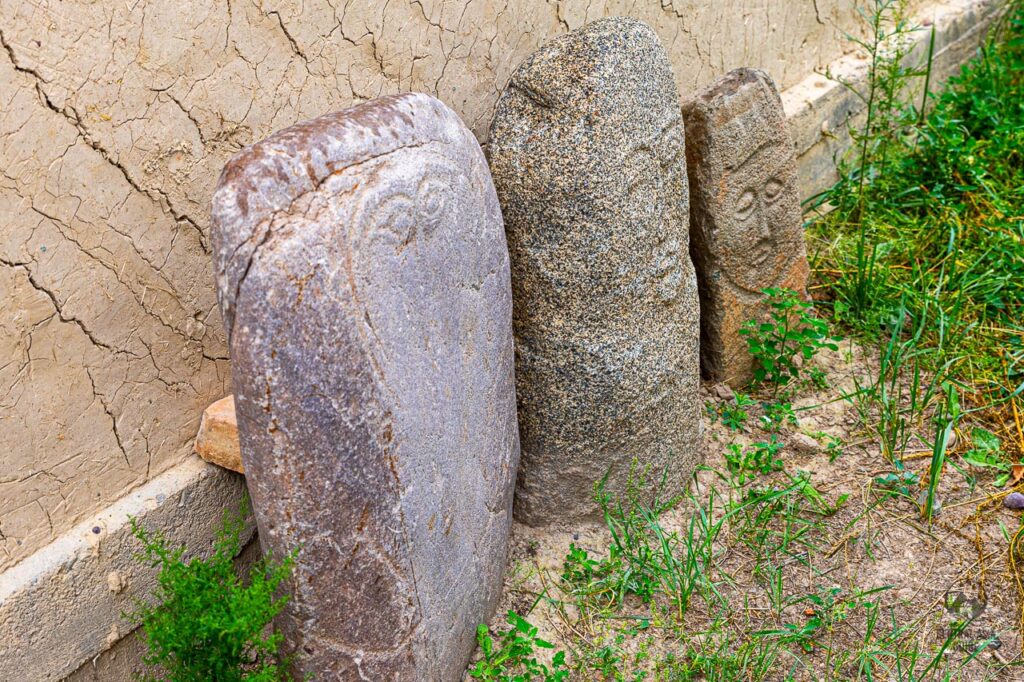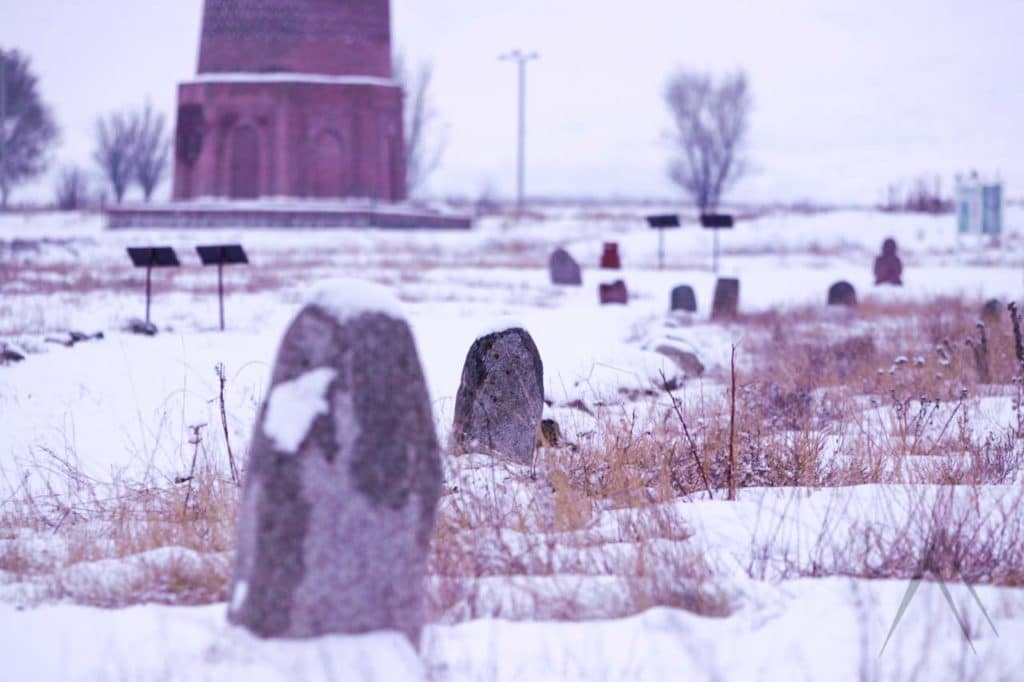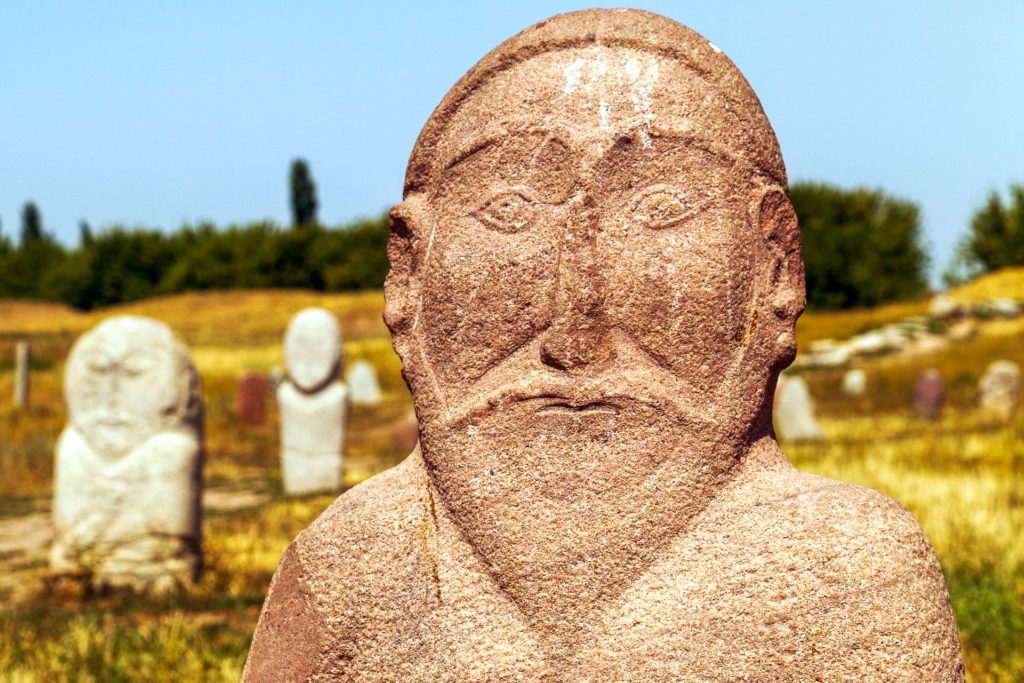Balbal stone statue
Balbals in Central Asia
The human-shaped stone sculptures found in many places around Central Asia are widely known as “balbals”, “kurgan stelae” or even the “father stones”. Balbal stone statues stand as timeless sentinels, echoing the rich history and cultural heritage of the region. They are anthropomorphic stone statues, images cut from the stone within or around old Central Asian cemeteries or burial mounds and their face was always pointing towards east towards the rising sun.
In the Turkic (not Turkish) world, they are commonly known as Bulbul which translates as “ancestor” or “grandfather”. They have a strong face shape and are believed to be first made by the Turkic tribes as a representation of slain enemies. These enigmatic monuments serve not only as impressive works of art but also as vital markers of identity, honoring the legacies of the ancestors.

Another belief tells that the stones next to these usually 0,5-2 m statues represent the amount of enemies killed by the person that the sculpture was erected for. It needs to be noted though that in 2022, a 3 meter tall balbal was discovered by a potato farmer in the Issyk Kul region of Kyrgyzstan so the size can vary.
It has been also concluded that the balbals developed later into memorials to the ancestors that are described by detailed carvings of faces and hands. Balbals give us an insight into the clothes, jewelry, and weaponry of our ancestors. Archeologists believe that people carved swords on a statue describing a person who was a fighter or a man of power such as a tribe leader. A large portion of these statues are also carrying a dish as the people wanted to make sure that the deceased one would not need to suffer from hunger.


Balbal statues are believed to have originated between the 6th and 10th centuries. Historically, they were erected to commemorate fallen warriors and signify the strength and valor of a tribe. Each statue is unique, intricately carved to depict various features, from facial expressions to intricate clothing details. They were often placed along trade routes and burial sites, serving both as grave markers and as symbols of protection for the living.
The Balbal statues represent a fascinating intersection of art, spirituality, and social structure. Their presence in ancient burial sites speaks to the deep reverence for ancestors held by nomadic cultures. The sculptures were not just artistic expressions but also served as spiritual guardians, ensuring the safe passage of the deceased into the afterlife.


In the past, people also believed that during the first year, a dead person could still live in the body of a balbal and therefore kept the balbals in their yurts for a year. The balbal was only placed on the grave after this period of mourning had finished.
In addition to Central Asia, these stone figures are found in large numbers in, Turkey, Siberia, Ukraine, Southern Russia and Mongolia. In Central Asia you can find most balbals in Kyrgyzstan. The balbals originating from the the Iron Age, are identified with the Scythians and medieval Turkic people who populated the Eurasian steppes stretching from the Danube River in the west to the Altai Mountains in the east.
Where to find Balbals
Balbals are rarely found in the nature nowadays but there are some in their original locations in Kyrgyzstan in the Sary Jaz valley and the rivers along the two rivers called Uch Kel and Kaindy that are tributaries of the Sary Jaz river. Most of the balbals have been collected to museums and can be found for example in the following locations. In addition, some balbals are aldo found in a small museum in Kochkor.
Page updated 4.12.2022